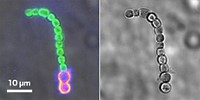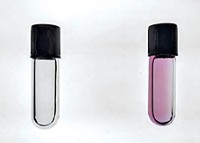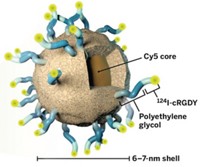Advertisement
Grab your lab coat. Let's get started
Welcome!
Welcome!
Create an account below to get 6 C&EN articles per month, receive newsletters and more - all free.
It seems this is your first time logging in online. Please enter the following information to continue.
As an ACS member you automatically get access to this site. All we need is few more details to create your reading experience.
Not you? Sign in with a different account.
Not you? Sign in with a different account.
ERROR 1
ERROR 1
ERROR 2
ERROR 2
ERROR 2
ERROR 2
ERROR 2
Password and Confirm password must match.
If you have an ACS member number, please enter it here so we can link this account to your membership. (optional)
ERROR 2
ACS values your privacy. By submitting your information, you are gaining access to C&EN and subscribing to our weekly newsletter. We use the information you provide to make your reading experience better, and we will never sell your data to third party members.
Materials
Worm Quantum Dot Factories
Scientists hijack metal detoxification machinery in earthworms to manufacture semiconducting nanoparticles
by Lauren K. Wolf
January 7, 2013
| A version of this story appeared in
Volume 91, Issue 1
Not only do earthworms fertilize soil and help catch fish, but the wriggly creatures are also capable of manufacturing semiconductor nanoparticles called quantum dots, according to researchers at King’s College London (Nat. Nanotechnol., DOI: 10.1038/nnano.2012.232). Scientists have previously biosynthesized nanoparticles by hijacking the cellular machinery inside bacteria, viruses, and fungi, but “we’re pretty sure this is the first time this has been intentionally achieved in a higher animal,” says Mark Green, who led the research team. To prove the worms capable of the feat, Green, Stephen R. Stürzenbaum, and coworkers put the animals in soil laced with cadmium chloride and sodium tellurite. When they later cut the worms open, they found 2-nm-diameter CdTe quantum dots. The researchers think the earthworms sequester the heavy metals as part of a detoxification mechanism. After harvesting the worm-made dots, the team demonstrated their utility as imaging agents: The particles are taken up by ovarian cancer cells and emit green light after being excited at blue wavelengths.





Join the conversation
Contact the reporter
Submit a Letter to the Editor for publication
Engage with us on Twitter